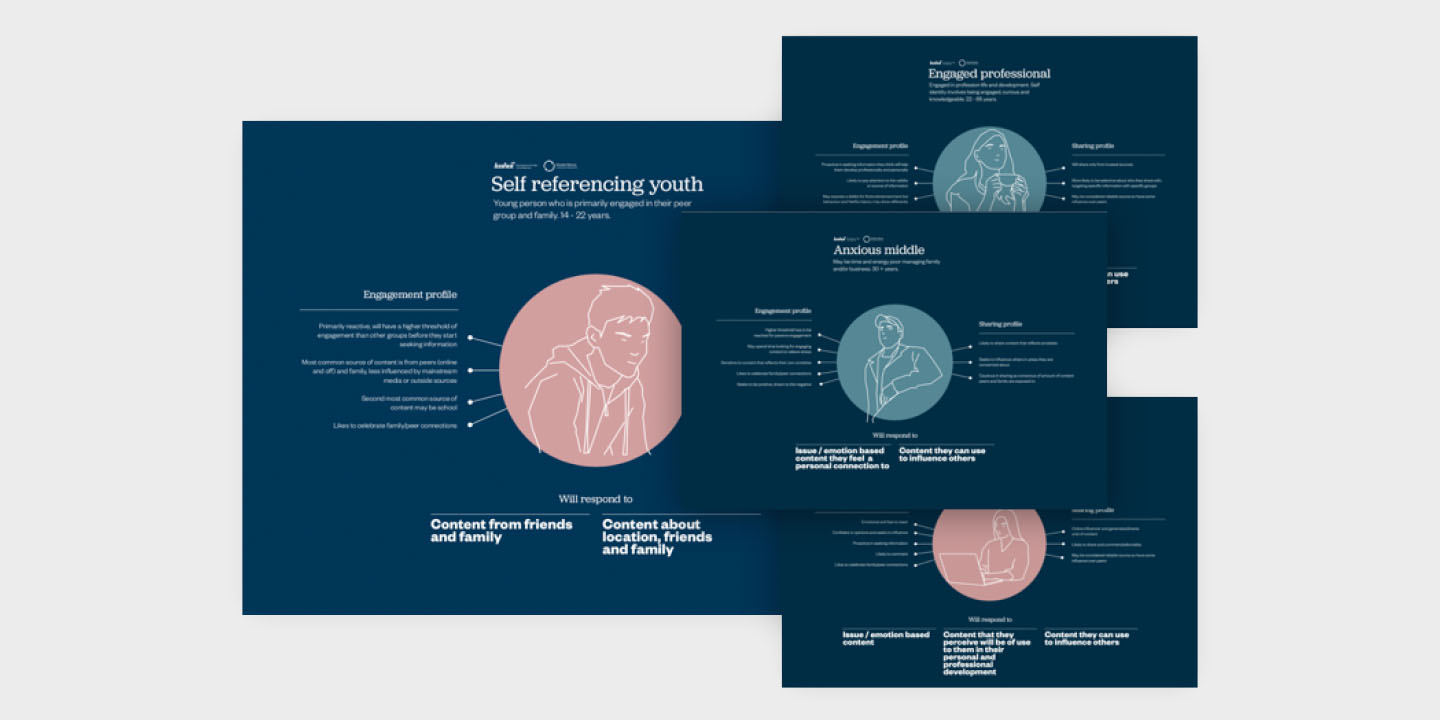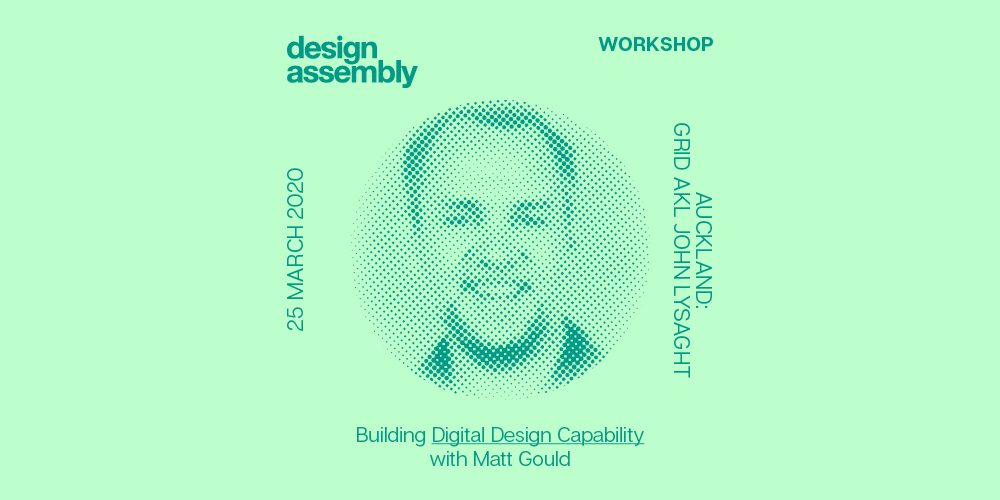5 minutes with… Matthew Gould, director of Lushai, co-founder of UX Gym and co-founder of the UX Homegrown design conference.
Ahead of our Auckland DA Workshop: Building Digital Design Capabilities we caught up with our workshop facilitator Matthew Gould. Matt is the Auckland director of Lushai, co-founder of UX Gym and co-founder of the UX Homegrown design conference. He is an experienced user experience consultant and design educator with a history of employing user-centred design processes in a variety of sectors to develop successful digital strategy and compelling interactive experiences and service design solutions.

What is your background and how did you get into user experience design and education?
My background is in design and photography, I have a Bachelor of Design and also a Bachelor of Arts. For a long time, I considered the three years I spent doing a BA as lost years before I discovered design but now I can see it probably gave me some good critical thinking skills, plus I had an excellent time. I think a vague generalist arts degree is actually really useful.
I got into UX by making websites for my photography. At some point, I realised I enjoyed solving all the design problems involved in creating a fluid interactive web experience more than I was enjoying my photography. Having said that, describing the first few websites I designed as ‘fluid and interactive’ is probably being a bit generous.
For the education thing, my business partner Lulu Pachuau and I thought practical, accessible UX education wasn’t being done as well as it could be, so we decided to fill the gap. I had been designing and facilitating training for our design agency (Lushai) clients for a while and it just felt like something that should be made more widely accessible.
Your upcoming DA workshop focusses on building internal capability for digital, what shape does the Lushai Team take?
Lushai is very small, Lulu and I as principles in Wellington and Auckland respectively, and a handful of trusted contractors. In a team as small as ours we need everybody to be very good all the time! We like very practical and competent types who are also creative and natural lateral thinkers. They must have all the things! We ask a lot from them I know.
Although we are small our clients tend to be larger organisations like corporates and government. I think that’s because our team has the same calibre of people you would find in the big 4 consultancy firms or larger design agencies, but we come with a lot less fuss and far fewer overheads. We’re trying to figure out how to make our services more accessible to smaller organisations as well and Lulu has been doing some great work with https://www.treesthatcount.co.nz in Wellington.

What does a typical working day at Lushai involve for you and what do you enjoy most about your job?
There are a few typical days since our work changes so much depending on the kind of project we are working on. Research, strategy, design, or usability testing projects all have very different flows. But we do have the regular cadence of UX Gym courses that we need to prepare for, run and then revise, so that keeps us regular so to speak. At the moment my days are starting with about an hour of video conferencing from home with my dodgy rural ‘broadband’ to a client in the US, before heading into our office to do the actual work, which at the moment is lots of heavy UI design.

What project, personal or professional, are you most proud of and why?
Probably UX Gym, I feel like out of all the things I’ve done that’s the one that has had the most impact. I’m now regularly going into client offices and meeting people who did our courses and now work for one of our clients, which is really rewarding.
I like to think (perhaps this is a bit self-aggrandizing sorry) that we are making a real impact on the quality of human-centred design practice in New Zealand as even though we are working on an individual level, those people go on to work for major organisations so it has a real impact.
We also did some work for corrections last year creating journey maps of the experience of people leaving prison. I was super impressed with how compassionate and hard-working the people on that project were, which made it a real joy.

Do you have a recent Lushai project that you found particularly challenging and if so what did you learn from that project?
We had a couple of projects early on where we were designing for the approval of a particular stakeholder as opposed to a clear user need or business problem. It becomes a guessing game, showing variations, trying to anticipate what a stakeholder will like or not like. It doesn’t lead to great work.
It taught me to always anchor any design discussion or critique in what we know about the experience of the user, and to take any ‘decision making’ stakeholders along with you (figuratively) as you learn what that experience is.
We figured out lots of great methods to guide stakeholders through challenging their own assumptions in a non-confrontational way. Replacing stakeholder assumptions with evidence takes all the conflict out of design discussions and moves it away from personal taste and speculation to people all focused on the same goal of creating a great experience for the person using the thing you are designing.
So just human-centred design really.

What does good universal design look like to you?
I think good universal design in an ideal world would look like designers reflecting the full diversity of experience of the people we are designing for, as opposed to a narrow range of people trying to use empathy to design for a wide range of human experiences. I remember seeing Liz Jackson (@elizejackson) speak at UX Australia a couple of years ago and she said something along the lines of if a disabled person is designing as part of your team a lot of the stupid shit we do that excludes people would never even come close to happening.
In the short term, I think it looks like shifting to making accessible universal design the starting point, as opposed to designing an experience then thinking ‘how can we retrofit this to make it accessible to everyone?’.
What should every designer know about Human (or user) centred design?
That it’s not the opposite of instinctive design, it doesn’t mean there’s no room for creativity, it’s just a way to anchor your designs in reality.

What advice do you have for designers getting started with UX?
In terms of that first job, the hardest part is the first gig. Everybody wants someone with experience but how can you get experience if you can’t get work! Getting work gets easier with every project you get under your belt. In the meantime network as much as you can and make sure you have a portfolio that not just shows your work but tells the story of the process you used to do it. Even if you only have student work that’s really important.
Also, if someone employed you as the sole designer for your first role put pressure on them to get someone to mentor you, it really slows down your progress if you have to figure out everything on your own.
In your opinion what 3 factors will have the greatest impact on New Zealand’s design scene in the next 5 years?
This a trap question! The design world is full of smart people who have confidently and incorrectly predicted the future. But I’ll take a punt. I would say the main things that will impact design in the next 5 years are people related more than tech-related. A greater diversity of people working in design leading to a greater diversity of design outcomes, a whole new generation moving into the space, and more movement towards a less colonial, more inclusive way of designing.
Via UXgym you teach introductions to UX, User Research, Journey Mapping and service design throughout New Zealand, (check out the upcoming events in AKL, WLG and CHCH here) what do you find most rewarding about sharing your knowledge with the community?
Meeting someone a few years after they did a course who says their organisations has moved to a more human-centred process and had good results, or someone who has made it over that first hurdle from aspiring UX designer to employed UX designer.

And finally, what can participants expect from your upcoming building digital design capabilities workshop. https://designassembly.org.nz/calendar/auckland-da-workshop-building-digital-design-capabilities/
It will be very practical with a process you can use to identify what you need to do to build your organisation’s capabilities and also some things people can do straight away to level up their design game. Also like most things in design, if we are doing it right, it will be fun!



